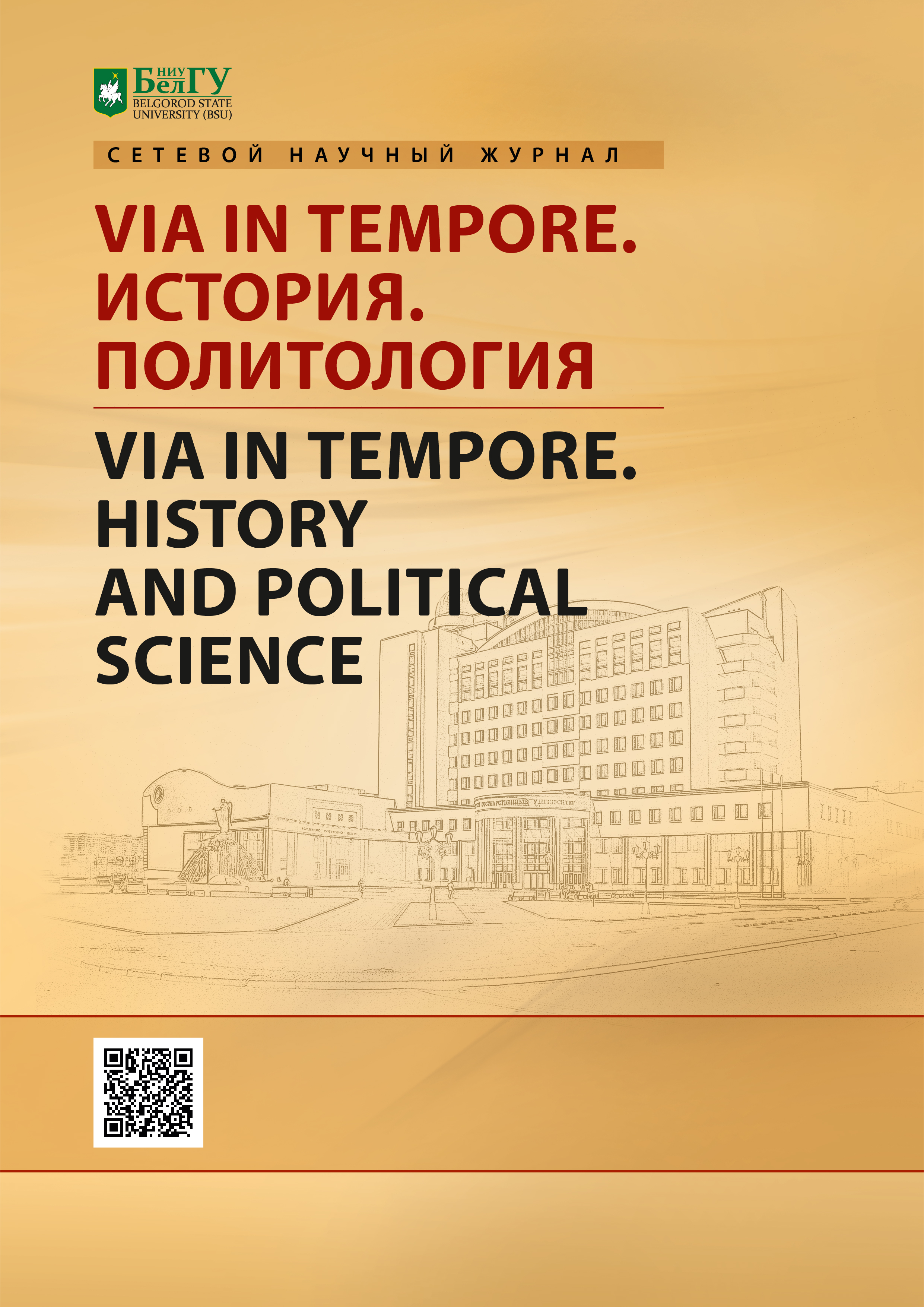A Tudor-era house (according to William Harrison's «Description of England»)
DOI:
https://doi.org/10.18413/2687-0967-2020-47-3-525-531Keywords:
William Harrison, «Description of England», the house, the fireplace, the Tudor eraAbstract
The article is devoted to the study of everyday life of the Englishmen of the Elizabethan era, and in particular their houses, according to the testimony of William Harrison, author of «Description of England», 1577. From William Harrison’s point of view, an Englishman's home is an object of pride. According to him, houses in England differ in the material from which they are built. According to William Harrison, the difference in materials for building houses is determined by the climatic conditions of the area where they were built. In addition, the difference in houses is determined by the status of their owners. There are houses of commoners and aristocrats. William Harrison gives a special place to the decoration of houses, focusing on the latest fashion trends in the interior, namely, the increase in the number of chimneys and fireplaces, the appearance of feather beds and silverware. These innovations, according to him, affected all segments of the population of England. «Description of England» by William Harrison allows you to figure out that home means a lot in the mentality of the English Tudor era.
Downloads
References
Бартон Э. 2005. Повседневная жизнь англичан в эпоху Шекспира. М., Молодая гвардия, 242.
Венедиктов А.И. 1962. Искусство Англии. Архитектура. Всеобщая история искусств. Т. 3 (6). Искусство эпохи Возрождения. М., Искусство, 528 с. С. 483–494.
Соколова М.В. 2015. Английский загородный дом: развитие идеи власти и покровительства от эпохи абсолютизма к викторианскому времени. Исторические исследования. № 2: 115–126.
Уорсли Л. 2016. Английский дом. Интимная история. М., Синдбад, 430.
Airs M. 1982. The Buildings of Britain, A Guide and Gazetteer, Tudor and Jacobean, London, Barrie & Jenkins, 192.
Airs M. 1998. The Tudor and Jacobean Country House: A Building History. Bramley, Stroud, Sutton, 240.
Brown R. 1841. Domestic Architecture: Containing a History of the Science and the Principles of Designing Public Edifices, Private Dwelling Houses, Country Mansions, and Suburban Villas; with Practical Dissertations on Every Branch of Building, from the Choice of the Site to the Completion of the Appendages. Also Some Observations on Rural Residences, Their Characteristic Situation and Scenery; with Instructions on the Art of Laying Out and Ornamenting Grounds. London, G. Virtue, 342.
Cooper N. 1999. Houses of the Gentry. 1480–1680. New Haven & London: Yale University Press, 370.
Gotch A.J. 1901. Early Renaissance Architecture in England: A Historical descriptive account of the Tudor, Elizabethan and Jacobean periods, 1500–1625. London, B.T. Batsford, 496.
Gotch A.J. 1916. Architecture. Shakespeare's England. An Account of the Life and Manners of his Age. Vol. 2. Oxford: Clarendon Press in Oxford: 50–74.
Guy J. 1988. Tudor England, Oxford University Press, New York, Oxford University Press, 582.
Halliday F.E. 1967. Cultural History of England. London, Thames and Hudson, 320.
Harrison W. (1577), 2001. A Description of Elizabethan England. Chapter VIII Of the Manner of Building and Furniture of Our Houses [1577, Book II, Chapter 10; 1587, Book II, Chapter 12]. The Harvard Classics. Vol. 35. Chronicle and Romance. Part 3. New York, P.F. Collier & Son, 407. New York, Bartleby. Com. URL: https://www.bartleby.com/35/3/8.html (дата обращения: 02.02.2020).
Harrison W. (1577), 2001. Description of Elizabethan England. The Harvard Classics. Vol. 35. Chronicle and Romance. Part 3. New York: P.F. Collier & Son, 407. New York, Bartleby.Com. URL: https://www.bartleby.com/35/3/ (дата обращения: 02.02.2020).
Henderson P. 2005. The Tudor House and Garden: Architecture and Landscape in the Sixteenth and Early Seventeenth Centuries, Paul Mellon Centre for Studies in British Art. New Haven, London, Yale univ. press for the Paul Mellon centre for studies in Brit. art, 288.
Holinshed R. 1976. Holinshed's Chronicles. England, Scotland and Ireland: in 6 vol., with a new introd. by Vernon F. Snow. [Repr., 2nd print.]. New York, AMS press, Vol. 1: England. 766; Vol. 2: England. 871; Vol. 3: England. 1071; Vol. 4: England. 952; Vol. 5: Scotland. 756; Vol. 6: Ireland. 461.
Howard M. 1987. The Early Tudor Country House: Architecture and Politics 1490–1550. London, George Philip, 232.
Lees-Milne J. 1951. Tudor Renaissance. London, B.T. Batsford, 152.
Macquoid P. 1916. Home: Furniture: Food and Drink: Domestic Customes: Christenings, Weddings, Funerals. Shakespeare's England. An Account of the Life and Manners of his Age. Vol. 2. Oxford, Clarendon Press in Oxford: 119–153.
Pragnall H. 1984. The styles of English architecture. London, B.T. Batsford, 176.
Quiney A. 1989. Period Houses, a guide to authentic architectural features. London, George Philliр, 191.
Strong R. 1998. The Renaissance Garden in England. London, Thames and Hudson, 240.
Summerson J. 1958. Architecture in Britain. 1550–1830. London, Harmondsworth, Penguin Books, 592.
Williams P. 1969. Life in Tudor England. London, B.T. Batsford Limited, 178.
Worsley L. 2012. If Walls Could Talk: An Intimate History of the Home. New York, Walker & Company, 368.
Abstract views: 765
Share
Published
How to Cite
Issue
Section
Copyright (c) 2020 Via in tempore. History and political science

This work is licensed under a Creative Commons Attribution 4.0 International License.


